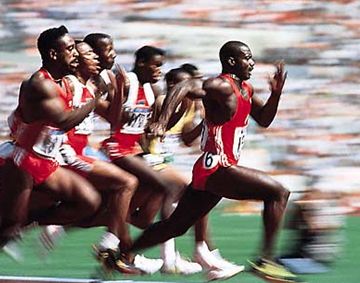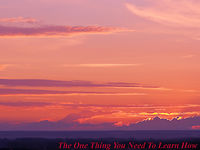Réflexions profondes - Moving the Body as One
There are many elements that make movement beautiful, such as line and intention and clarity. We have studied and analyzed this subject at length. It's fascinating.
But the single most important element is what we call "body integrity". Body integrity, the way we use the words, means the active engagement of your center in your movement as well as making that the source of your movement.
Moving from your center is a hard thing for many people to understand and learn. In this video and in others to come, we give exercises to help.
The bottom line is: you should want this. Do what you need to learn to move this way and it will hugely improve how you look when you dance.
Not only do we want you to move the body from your center, we also want you to move the body as one whole. For example, when we talk about walking, this isn't just that you put a leg forward, it's that your center drives the leg forward. AND the contra body motion and the action through the upper and lower torso integrates the whole of the body. We would assert that even a thing as small as the alignment of your head is the difference between a gold medal and no medal.

- Nom d'artiste:
- QTango
- Titre de la chanson:
- El Garron
- Titre de l'album:
- It Takes Q To Tango
- Site de l'artiste:
- http://www.qtango.com/
(From the website): Created in July, 2009 by Erskine Maytorena, a third generation tango musician and opera singer, QTANGO performs authentic Argentine tango arrangements as often as two to three times a week throughout the Southwest for tango dancers and listeners.
- 00:05
- When I initially started thinking about working on this chapter,
- 00:09
- I said to myself "How can I make this real for my students?"
- 00:11
- Because I really want you to want this, I want you to want
- 00:15
- to have your whole body moving as one, and initiating each movement.
- 00:19
- And so I thought "Well, I'll pick an example, and I'll talk about how it makes you much more attractive".
- 00:24
- And I will make this so compellingly real, that you will want this.
- 00:30
- And I thought "Well, there are a lot of things I could choose"
- 00:33
- I could choose how it makes the lead that much more profound; how it makes the follow move from a guessing game
- 00:38
- to something that's, "Of course I did that, how could I do anything else?", something that's natural and unavoidable.
- 00:43
- I could talk about the way it makes your lines clean and clear and beautiful; I could talk about the way it makes you more powerful.
- 00:50
- So I thought I'd pick one of these, and I'd go on and on, and eventually you'd want it.
- 00:55
- And I thought to myself, "You know, I can't do that, because it's not true".
- 00:58
- And the reason that it is not true is because it is not only about any one of those things, it's about all of them and more.
- 01:03
- So, in this chapter we're going to do about all of them.
- 01:06
- And how moving with your whole body makes all of them a lot better.
- 01:12
- So, just strictly from an appearance perspective, say, "Is this guy attractive or not?"
- 01:16
- "How attractive is he?" It's not dance, just attractiveness.
- 01:22
- OK, there's one; here is two; here's three.
- 01:33
- Just that.
- 01:34
- Or, for example, you talk about moving the whole body as one piece,
- 01:37
- and that's about making my body whole, by the way, right if I'm like this,
- 01:40
- In some sense, my upper neck and upper back are disconnected from my lower body, that's why it fits in this theme.
- 01:46
- If I ask someone to do a front ocho, and I pivot them like this, that's about my arms going in and out,
- 01:52
- you know, I'm boxing or something, and... we'll talk more about that later, and really, if I do this,
- 01:59
- that is about my chest, rather than about my arms. It makes it a very profound lead.
- 02:04
- If I do this, of course someone maybe doesn't go. That's all in my arms, if I do this - they'll move.
- 02:12
- If I'm going to follow, I'm a follower now, and the guy takes me that way,
- 02:18
- and I go, "Oh, I'm going that way", and then I catch up with the leg, of course it feels awkward.
- 02:22
- But, if every millimeter of movement taking me that way also moves my leg, then, by the time the step comes,
- 02:29
- it's like, you know, "How could I not go there?"
- 02:32
- If we take a line...
- 02:36
- let's say I want to do a nice lunge line.
- 02:40
- Do you see the niceness of the lunge line? they're like, "No, we don't." Good.
- 02:45
- So, what's the lunge line about? It's about being long, so let's make me long.
- 02:53
- You see the nice...well. they're like, "eh, it's less bad".
- 02:56
- So the legs are fitting, but my torso is not communicating that, so I'll make the torso lengthen as well.
- 03:03
- And you'd say, "Oh, that's much better." But it's not done yet. So, this lunge line is about lengthening.
- 03:10
- So if you see me do...
- 03:14
- that, then, all of a sudden, it works, because that is about the lengthening.
- 03:20
- And finally, I have this idea that it makes you a lot more powerful.
- 03:25
- Because, when I take my whole body, and it all goes back, then, you know, whoever was in front of me, they just went forward.
- 03:34
- Now, we can think of this from a lot of perspectives.
- 03:38
- One way to think of moving with the whole body is to think of it from a functional perspective.
- 03:43
- So, a while ago, I took a rock climbing class.
- 03:46
- And me, I didn't know how to rock climb. This is how I reached for the rock. And then I'd pull myself up.
- 03:51
- I used these muscles and up. And the body: not at all.
- 03:55
- I asked my rock climbing teacher how he reaches for a rock. This is how he did it.
- 04:01
- And you know, he hasn't even moved his arm yet. And then he grabs the rock.
- 04:07
- So the point is, it's not about the arm. It's about the whole body being involved in that action that's reaching for this rock.
- 04:12
- I hear, I don't know, this is not first-hand knowledge, but that boxers throw a punch from their hip and from their midsection.
- 04:20
- And that, in some sense, the punch isn't about the arm. I mean, it is, but it's really about...
- 04:26
- Right, so, if I punch someone, this big violent bad guy comes at me, bang.
- 04:31
- Is he going to fall down? No, he's going to knock me over. but...because that's just my arm, it's not very convincing.
- 04:38
- But, if he comes at me and I throw my hip, and I throw, and I have this hip rotation in the midsection,
- 04:48
- And it's sort of you get the sense of violence.
- 04:50
- And I don't know how to throw a punch, but there's that idea of the body being involved.
- 04:54
- I had a friend who was into golf. He was pretty serious.
- 04:57
- He was like, "David, golf swings isn't what you think it's about".
- 05:00
- He was telling me that his golf pro told him that... or was working with him
- 05:05
- on making it about the shift of the center from one foot to the other, and about the rotation.
- 05:09
- Right, so the rotation comes from your midsection, and the shift is your center of gravity from one foot to the other.
- 05:15
- So the golf swing is not this, in the arms.
- 05:18
- It's this.
- 05:22
- Once again, I'm sure lots of things are wrong, since I don't play golf, but the fundamental idea is still the same.
- 05:27
- That you are using your whole body, focusing especially on your center of gravity and your torso, to initiate movement.
- 05:37
- And the same is true in tango.
- 05:39
- If I ask someone to step side, I don't say... And I'm going to take a side step with them,
- 05:43
- I don't say "Let's go side" where I'm using my arms.
- 05:47
- And, I don't say "Let's go side" where I'm using my legs,
- 05:51
- I say "Let's go side" and it starts in my center, and I pull it - "Let's go side", and they go, "OK".
- 05:58
- So we keep it very functional.
- 06:01
- So, this idea of moving with your whole body - it's not only something that I would say is functional for a physical movement,
- 06:07
- but you can even put it in an emotional context, or in the context of communication.
- 06:11
- So, for example, sometimes I see people do this: they'll say,
- 06:16
- "No, don't give me that, I really don't want it", you know, there's this beautiful apple pie, "No, no, I can't take it".
- 06:22
- Or, for example, you'll have people do things like "Oh, that would be wonderful."
- 06:29
- And you ask, "Why is that funny?" Why is it funny if someone says, "Oh, that would be wonderful"?
- 06:34
- And the answer is because they're not acting as one, right?
- 06:37
- So it makes sense if I say, "That would be wonderful", right, and there's no humor in that.
- 06:42
- But, if I say, "That would be wonderful", you know I'm not really saying that at all.
- 06:47
- And what's more interesting: it's not the mouth that tells the truth. It's the body.
- 06:53
- So, if you think about it in this context, then you'll say that communication that is whole body,
- 07:00
- that all of you gives the same message, starting with the body, is communication that makes sense.
- 07:06
- And communication where something is going against that, let's say I do this:
- 07:12
- I say, "I'm really happy."
- 07:17
- What do you believe? And the answer is you believe the body. And, if things are lying, and I say, "I'm really happy",
- 07:26
- what do you believe? You see the happy waving hand, but there's a sad body. This one's very confusing.
- 07:30
- But, probably, you'd believe the body over the hand, because the body's more towards the core.
- 07:35
- And it's not just that. So, if we think of tango as, you know, performing, as four things, that you've got ...
- 07:42
- The dynamic in your body, which this is obviously about; you've got the use of timing; you've got the choreography you're doing;
- 07:49
- And then you have a sense of acting. Well, in some sense this is about the acting as well.
- 07:53
- So, for example, if you see me, and I'm here, and I say, "I'm so happy".
- 08:02
- And you see I'm smiling, so it must be true.
- 08:04
- On the other hand, I could say, "I'm so happy", and you believe me more.
- 08:11
- Or, I could say...
- 08:16
- "I'm so happy", and now you really do believe me, because my whole body is about that.
- 08:20
- So, as you're wanting to make an emotional message, or any type of communication,
- 08:25
- the extent that the communication is whole, it makes it that much more powerful.
- 08:29
- And in the context of performing tango, then, you'd say "We're acting something, we're acting passion"
- 08:35
- And then that's believable, because the whole body is being in that place of passion.
- 08:39
- So we spent all this time showing you how being whole in your body is just vastly, vastly important, and it makes a huge difference.
- 08:48
- And you're, like, "Yes, David, we want it, what do we do?" And, right, there's this question, "David, I get it, but how?"
- 08:57
- And the answer... I'll give you a couple of exercises, so, for the leaders, imagine you're pushing a 500 lb object
- 09:04
- David!
- 09:06
- Who is not the follower, who, of course, is light as a feather and incredibly wonderful.
- 09:10
- Right
- 09:11
- Not to say that heavy is bad. I just dig myself deeper.
- 09:18
- But you're moving a 500 lb object, and you push,
- 09:22
- and if you were to move something that was 500 lb, you'd really dig in, you'd gird your loins, you'd tighten your abs, and then you'd push.
- 09:30
- And what I want you to do, the first exercise, for the leaders... Actually, this could be an exercise for both,
- 09:36
- is that as you're leading, you'll be pushing on my hips.
- 09:41
- She's just going to follow me, and sometimes, she will be the 5 lb that she actually is
- 09:45
- Right
- 09:46
- And sometimes she will be the 500 lb that she will have to work to be, pushing into the floor, and digging so it's hard for me to move her.
- 09:51
- And I don't know when, so for the leaders, I don't want your body dynamics to change.
- 09:56
- I want your body to be engaged the whole time, because you want to be ready. Right? This is a very functional approach.
- 10:03
- So I'm walking towards her, and I'm walking towards her, and I'm not changing how I walk, even though the pressure changes.
- 10:11
- One more time:
- 10:13
- So I keep my walk the same.
- 10:19
- And believe me, she's making it hard for me sometimes.
- 10:23
- That was fun!
- 10:24
- The other half... I'm panting.
- 10:26
- The other half, now, leaders, we're going to be moving our followers, who in actuality only take 5 lb of pressure.
- 10:33
- And for the followers, I want you to imagine that you're like a tumbleweed or a leaf in the wind.
- 10:39
- And, so, I'm just going to create soft pressure, and she's going to go in that direction. I'm going to create soft pressure...
- 10:45
- And, so, the job for the followers is not what kind of steps you're going to do, it's about just making sure your body can float in whatever direction he takes you.
- 10:57
- And eventually what happens, is you stop... for the followers, is you stop thinking about, "Oh, where do my legs go?",
- 11:03
- and you start thinking, "Let's just move my center of gravity, and let the legs land wherever they need to land".
- 11:08
- And the difference between this and tango is that, as tango dancers, we don't really want to dance like tumbleweeds, you know, or it wouldn't be tango.
- 11:16
- Instead, we add a sense of thickness and time and weight between each of the steps.
- 11:22
- Each of the weight changes, whenever you go over the leg to the leg, and that adds a kind of shape and energy that makes it more tango-like.
- 11:31
- We started this chapter talking about the different areas in which moving with your whole body can make a big difference.
- 11:39
- And then, after that, we talked about different contexts, right?
- 11:43
- That you can approach it from a functional perspective, you can approach it as a way of making communication more powerful.
- 11:50
- After that, we gave you some tools, which you'll have fun with. Practice. Play home with a friend.
- 11:57
- But, the fundamental idea is that this really Is that important and it really does make everything better.



